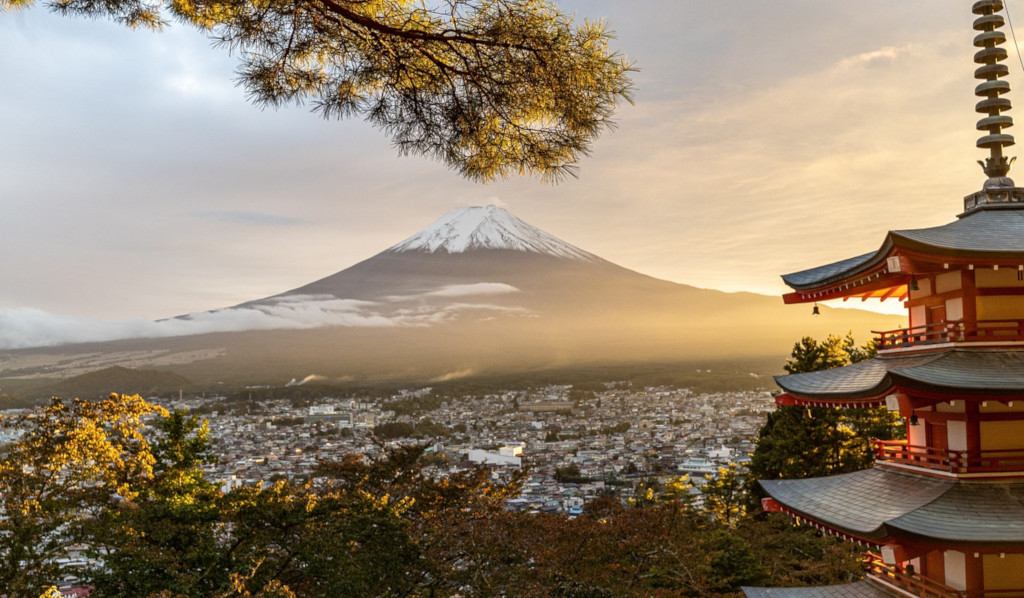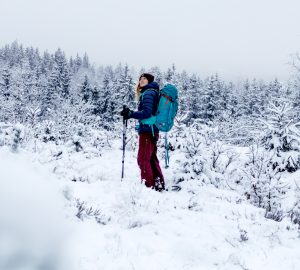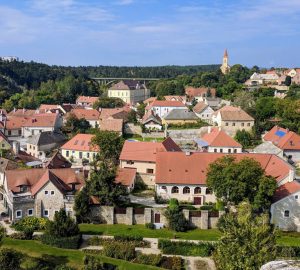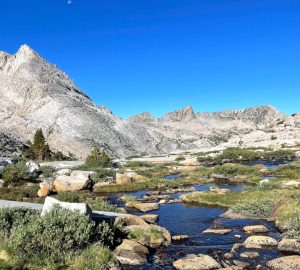Japan is one of the most fascinating and diverse travel destinations in Asia. Millennia-old temples, hyperactive cities, one of the best cuisines in the world and enchanting, superlative-prone nature theoretically justify years of traveling there. Unfortunately, most of us don’t have that much time, so we’ve put together a three-week backpacking guide to Japan.
Our itinerary focuses on hiking in addition to the main attractions: The Henro, a Buddhist pilgrimage route, is not part of the standard itinerary for travelers through Japan, but definitely worth the detour. Climbing the iconic Mount Fuji is only possible in the summer months, but hiking in Nikko National Park is a year-round pleasure. And of course, we have also put together the cultural highlights of the main island of Honshu with the cities of Tokyo, Kyoto and Osaka.
We recommend that you read our cultural etiquette guide for Japan in advance and look into accommodation and transportation options well in advance. Japan is not a country for spontaneous travelers, unless you have a generous budget. If you book your accommodation in advance, you can save a lot of money.
The same applies to transportation: the train network in Japan is world-famous because of the bullet train (Shinkansen), but unfortunately it is also very expensive. For cost-conscious backpackers, a bus pass or hitchhiking is the better option.
Our recommended route through Japan
- Day 1-3: Tokyo
- Day 4-6: Fuji
- Day 7-10: Kyoto
- Day 11-12: Osaka
- Day 13-16: Tokushima and the Henro
- Day 17-18: Nikko National Park
- Day 19-21: Tokyo
Tokyo
It’s impossible to start a trip to Japan in Tokyo and not be completely overwhelmed. You could easily spend weeks, heck, years, here alone without getting bored. That’s why we’re planning three more days at the beginning and end of this trip – you’ll need them. Here is a selection of the most important attractions in Tokyo.
Akihabara
Akihabara is the center for anime fanatics, comic stores, bright neon lights and excitingly costumed cosplayers – in other words, all the eccentric things that are often associated with Tokyo. Walking through Akihabara can feel a little strange at times, but that shouldn’t stop you.
Akihabara is unique and a great addition to the more traditional neighborhoods of the city. Visit an anime store, browse the ubiquitous electronics stores and lose yourself in one of the gaming arcades.
Shinjuku
No trip to Tokyo is complete without a visit to the ever-luminous Shinjuku district. With endless rows of neon signs, towering skyscrapers and bustling crowds, this is the epitome of Tokyo. Shinjuku is the stuff anime is made of and immediately brings to mind the legendary classics of the genre such as Akira or Neon Genesis.
Shinjuku is also home to the best nightlife in Tokyo. The Golden Gai corridor is particularly exciting. This claustrophobic area is famous for its hole-in-the-wall bars, which can barely fit a few people at a time. You may well party in ten bars here and not even make it 50 meters.
Shibuya
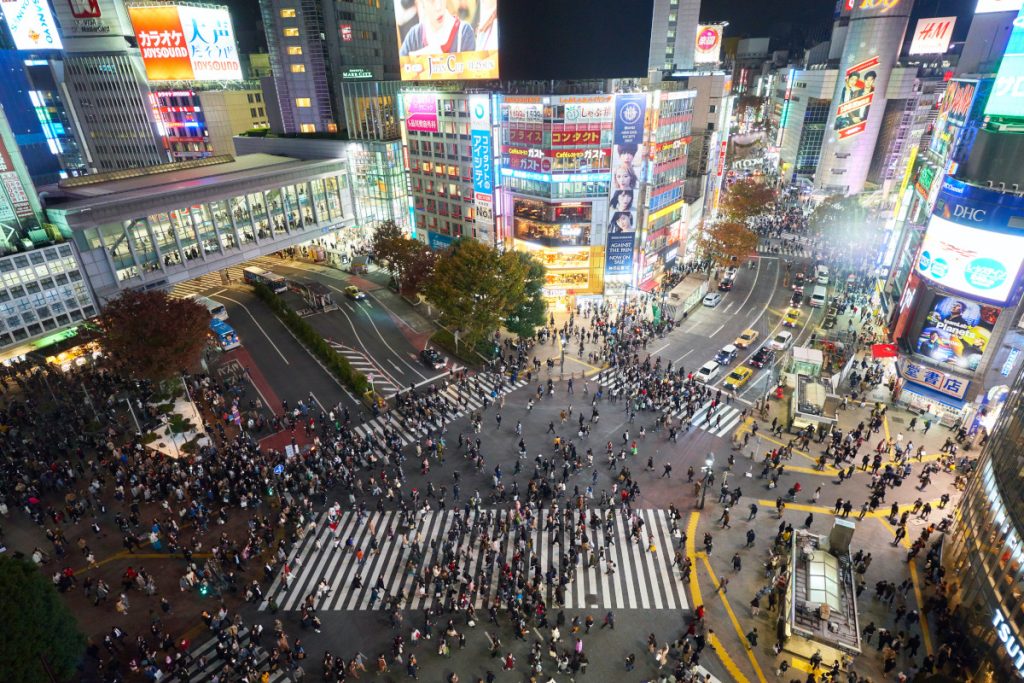
Shibuya is the rebellious side of Tokyo. There are so many different neighborhoods here that there is something for everyone. The center of Shibuya is very similar to Shinjuku in that both are bathed in colorful neon lights and are quite lively. The world-famous Shibuya intersection is also located here, with 15,000 people crossing it every traffic light phase.
What also makes Shibuya special is the great diversity of its neighborhoods: the hip Daikanyama, often compared to Brooklyn, the relaxed Ebisu with its tiny Tachinomiya bars or Harajuku, a hotspot for people in crazy costumes and for the hyper-cute culture for which Japan is also famous.
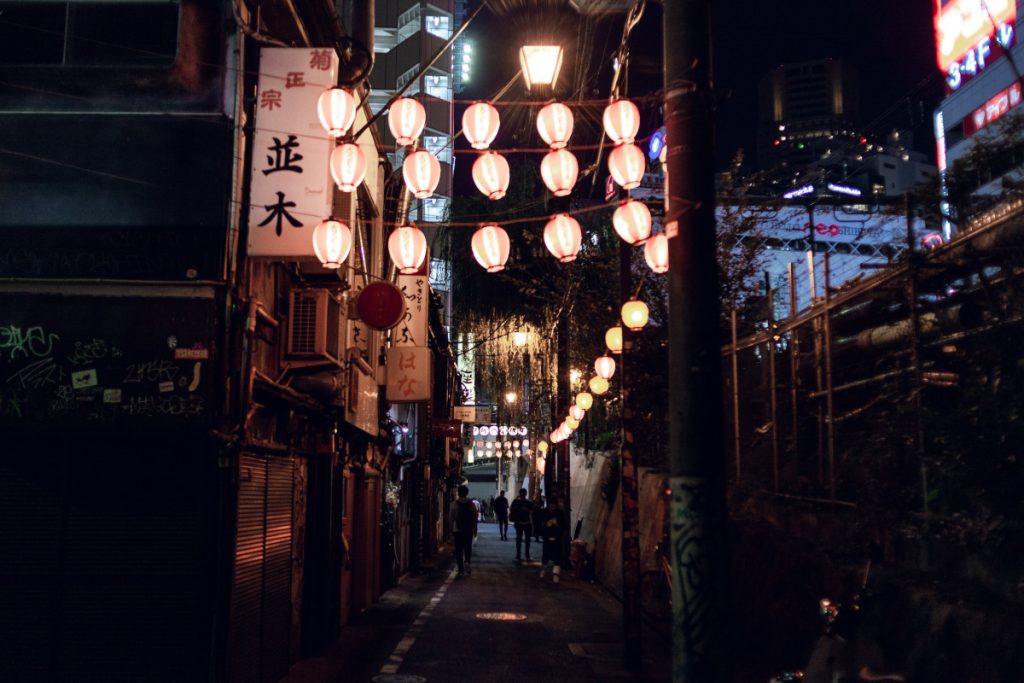
Meji Shrine
The magnificent shrine of Emperor Meiji and Empress Shken is one of the most revered religious shrines in Tokyo and dates back to 1915. The grounds cover 175 hectares and are made up of lush, ancient forest trees with an overwhelming number of different species that will show you the splendor of Japan’s native flora.
This group of trees is also home to the mysterious “Wishing Tree”, which is said to fulfill our deepest wishes. Many tourists and locals write their wishes on a piece of paper and hang it on the branches.
The museum in the inner district of the shrine houses all the original treasures of the royal ruler and his wife and is definitely worth a visit – as is the indescribably beautiful inner garden!
Senso-Ji and Asakusa
Senso-Ji is the largest and oldest Buddhist temple in the whole of Tokyo. It is dedicated to the Bodhisattva of Compassion, Guan Yin. There are beautiful shrines to admire, such as the Shinto shrine, the Akasaka shrine and even an exquisite five-storey pagoda.
The temple is located in the Asakusa district, which is also well worth a visit. Opposite the temple is Nakamise Street with its many street stores, where you should definitely try one of the popular ningyo yaki. These are delicious cakes filled with sweet red bean paste. After a concentrated dose of culture in the temple, you can relax here and then take a nice stroll through Asakusa – a good opportunity to get to know a traditional part of Tokyo.
Tokyo Sky Tree
The Tokyo Skytree is one of the most popular tourist attractions in Japan and an absolute must-see. It is best experienced in the early evening or at night, as the huge, 634-metre-high observation tower rises from the ground like a colorful middle finger after sunset. It is not only the tallest building in the city, but also the tallest free-standing tower in the world.
There are several viewpoints all the way to the top. However, if you are ambitious and want to see Tokyo from the very top, you should venture up the glass spiral staircase to the 450-metre-high top – not for people with a fear of heights! The walls are made entirely of glass and the view is gigantic.
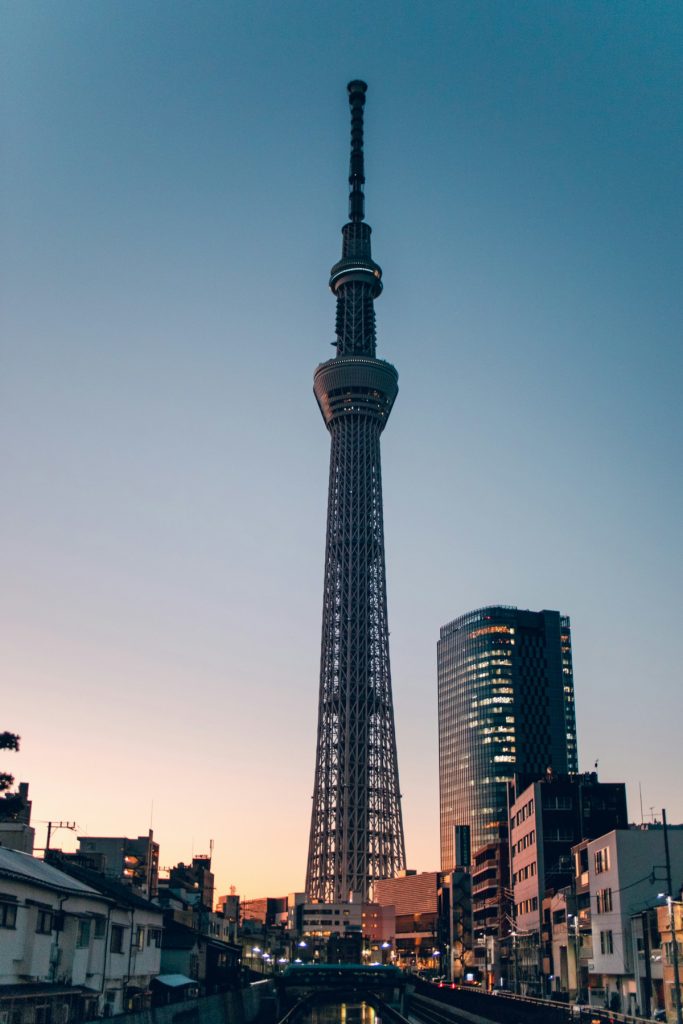
Fuji
After the first urban culture shock, it’s time to relax a little and turn to Japan’s first outdoor mecca: Mount Fuji and its surrounding villages. As one of the most famous mountains in the world, it is a must-see for hikers, (amateur) photographers and all other travelers – all year round. In spring during the cherry blossom season or in autumn, when the leaves of the surrounding forests turn colorful, Mount Fuji towers over the landscape with its white cap like a painting.
In summer, you can climb it in July or August, as only then is there not enough snow. Find out in advance what the current snow conditions are like. Ideally, you should start the ascent in the evening so that you reach the summit at dawn for the breathtaking sunrise. There are several huts along the way that offer food, drink and toilets.
Make sure you have enough water, warm clothing, energy bars and good hiking boots with you. You should also stay in a good hostel around Mount Fuji where you can rest before and after the ascent and meet nice people – for example in Gora.
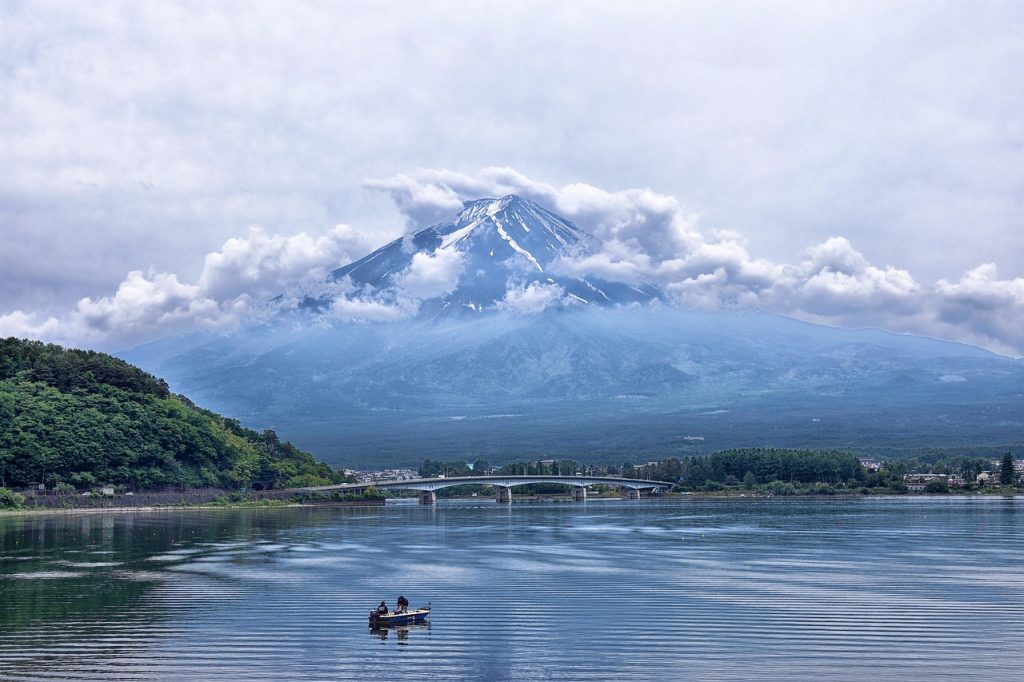
Gora
Gora is located pretty much halfway between Odawara and Gotemba and is part of the Hakone catchment area. The beautiful little town was practically built out of the ground around 100 years ago to meet the demand for hot springs in the area. There are plenty of them here: Gora and Hakone are home to 49 onsens, the famous Japanese hot spring baths. Perfect for relaxing after climbing Mount Fuji – or for enjoying without any physical exertion.
Gora is located directly at the end of the railroad line that connects this area with Tokyo. From Shinjuku, take the Odakyu line and then change to the Hakone Tozan line. The railroad line is very scenic and runs over a series of hairpin bends and bridged valleys. If you are traveling by car or bus, a day trip by train from Gora and back is worthwhile.
Another Gora highlight is the cable car through the Owakudani Valley of Hell to Lake Ashi: a smoking volcanic area with incredible moon- and hell-like landscapes. Find out in advance whether the cable car is running. The cable car may be closed due to volcanic activity.
Kyoto
Kyoto is packed with temples, shrines, castles, fascinating neighborhoods and great outdoor sights. Ideally, you should spend three to four days here to fully experience the city. Alongside Tokyo, Kyoto is the country’s most important cultural center.
Gion
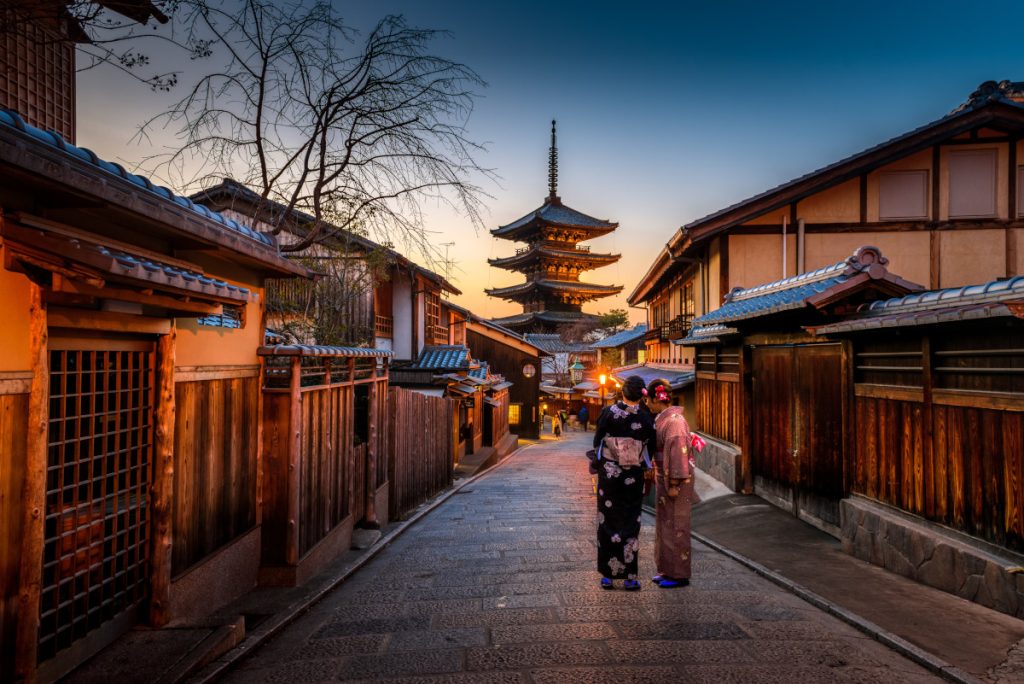
The geisha district of Gion is incredibly colorful and lively. You can find a lot of traditional Japanese architecture and history here, just by walking around and observing. Finding accommodation here is an ideal way to fully experience the district without having to travel. You’ll probably even see a few real geishas strolling the streets – but don’t approach them. It’s considered very rude.
If you want, watch one of the traditional Kyomai dances performed at Gion Corner or book a traditional tea ceremony with a geisha. The Gion is at its most atmospheric in the early evening, when the lanterns are lit and the sun slowly sets.
Kinkaku-Ji (Golden Temple)
The famous Golden Temple of Kyoto is a UNESCO World Heritage Site. Perched on the water, with its green, mountainous backdrop, it is a perfect example of Japanese architecture. The top two floors of the golden pavilion are covered in gold leaf. The Zen gardens of the temple complex also invite you to pause and marvel. The overall impression is breathtaking. It is worth arriving early to avoid the crowds of tourists.
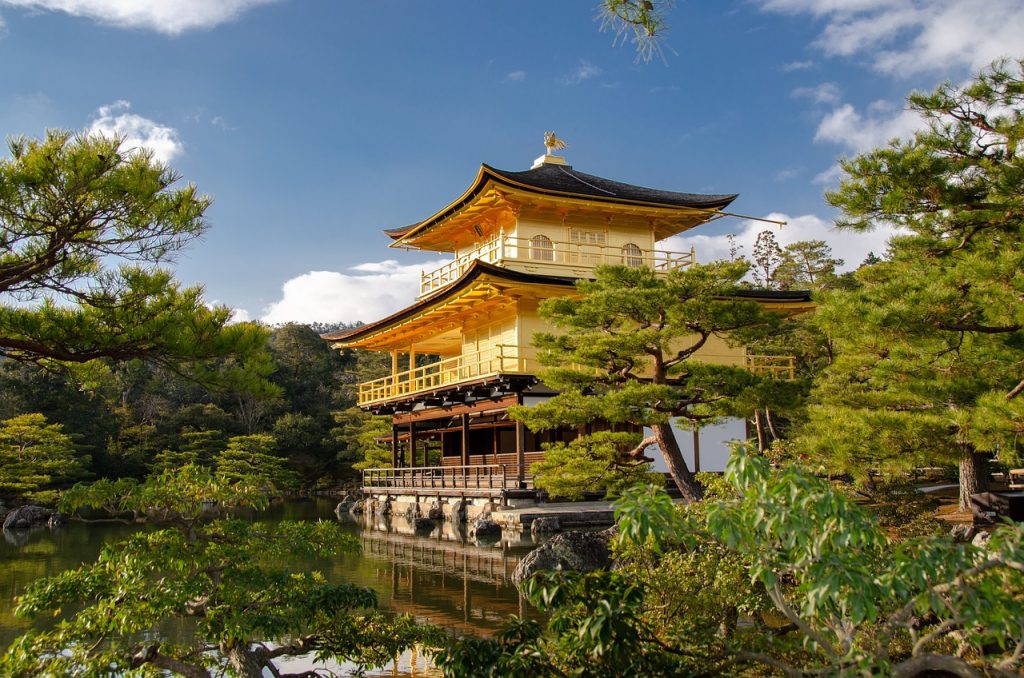
Nijo Castle & The Kyoto Imperial Palace
With its magnificent wood and gold leaf decorations, Nijo Castle is one of the best preserved examples of feudal-era architecture in Japan and definitely worth a photo stop. If you want, you can also visit the historically fascinating interior of the castle. The gardens are also well worth a visit.
Across the street from Nijo Castle is the Kyoto Imperial Palace. This ornately decorated palace is one of the most historic places to visit in Kyoto. It is the former seat of power of the Emperor of Japan. The imperial family now lives in the Imperial Palace in Tokyo in order to preserve the Kyoto Palace.
Nishiki Food Market
The bustling Nishiki Market, a narrow, five-block-long shopping street, is known as “Kyoto’s kitchen”. It specializes in all things street food, including fresh and cooked seafood, vegetables, Japanese sweets and cookware. It is the perfect place to find seasonal Japanese dishes and specialties from Kyoto. Almost everything sold here is locally produced. The market is very busy but pleasant, and visitors tend to be locals rather than tourists.

Tatonka offers travel backpacks with practical features. Made from robust materials, fairly and socially produced in our own production facilities.
Kiyomizu Sera Temple
The “Temple of Pure Water” is one of the most beautiful and famous temples in Japan. It was founded in 780 AD on the site of the Otowa waterfall and owes its name to it. The temple is located in the wooded hills east of Kyoto, but is easy to reach by bus. You can reach the temple complex via a path through the forest and escape the hustle and bustle of the city for a while.
Arashiyama Bamboo Forest
No visit to Kyoto is complete without a walk through the famous Arashiyama Bamboo Forest. Located at the foot of the ‘Storm Mountains’ in northern Kyoto, it is a seemingly endless bamboo grove where you can escape the hustle and bustle of Kyoto’s busy city center. It is particularly beautiful during the cherry blossom season.
The surrounding Arashiyama district is a fishing village where trained cormorants hunt fish in a dive – similar to the lakes of southern China. This is a unique way of fishing that can only be seen in Japan and China and you should definitely take it with you.
Kurama
One of Kyoto’s greatest sights is located outside the city: the mysterious and mighty Kurama. The mountain is said to be the home of the king of the Tengu, legendary creatures of Japanese folklore. On top of the mountain is the small town of Kurama, which is best known for its hot spring and the beautiful Kurama Temple. This is located on the steep green mountainside above the town. It takes around 45 minutes to hike up to the temple from the town or you can take the cable car halfway up the mountain.
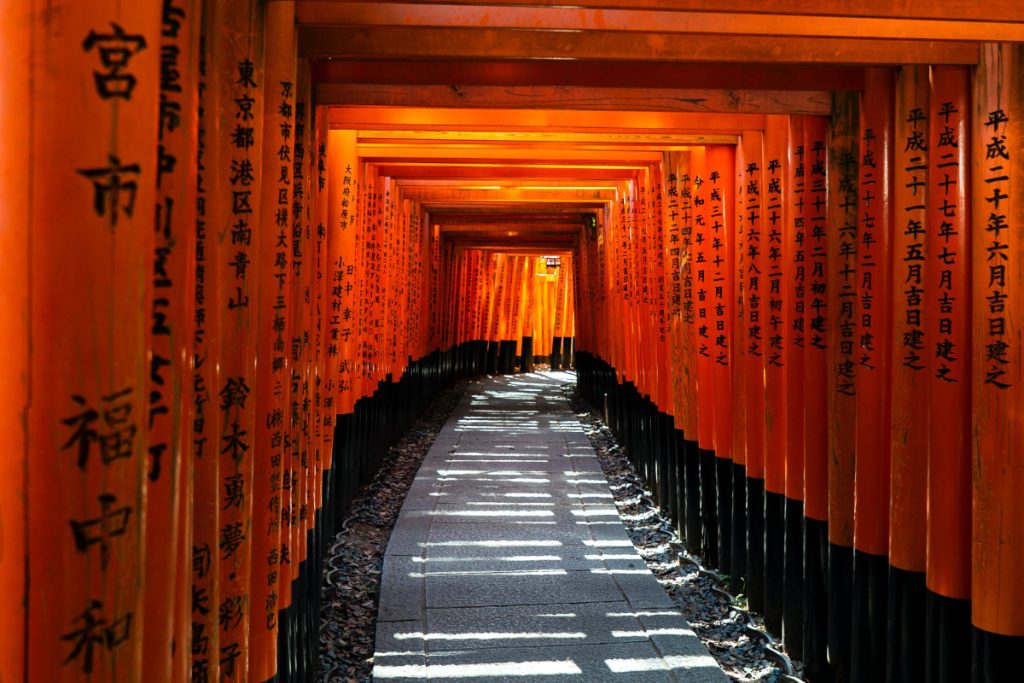
The temple’s impressive main buildings stand on a terrace on the mountainside overlooking the wooded valley. The red letterboxes lining the path and the traditional Japanese architecture of the buildings with their red wooden frames make for stunning photos and a unique, aesthetic image.
Osaka
Osaka may not have the wealth of cultural superlatives of Kyoto, but it still has a charm all of its own. There is more than enough to discover and if you want to continue your journey towards Shikoku and Henro, Osaka is the place where you can book a good bus connection to Tokushima. After all the hustle and bustle of Kyoto, you can of course take it easy in Osaka and visit absolutely nothing apart from a relaxed stroll through the city. If you do feel like it, the following sights are our tips.
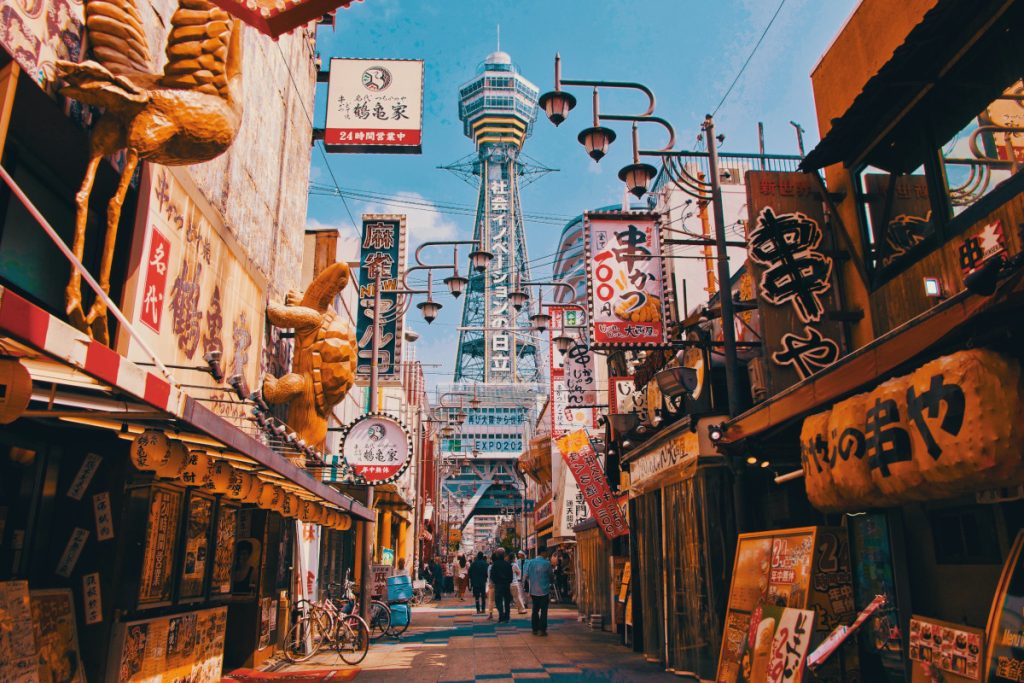
Umeda Sky Building
The Umeda Sky Building is known throughout the world for its design, shape and structure. The viewing platform, also known as the “Floating Garden Observatory”, is truly overwhelming. It floats on water and offers a 360° view of the city, which is particularly impressive at night.
Shinsekai
Osaka’s old town has a special charm and is perfect for strolling around and soaking up the vibe of the city.
Dotonbori
Another very popular district is Dotonbori. You should come here especially at night and explore the streets bathed in futuristic light by countless neon signs. This is where much of Osaka’s nightlife takes place and the street food available on every corner here is simply
Amemura
The Amemura district takes its architectural cue from American culture in a unique way. It is teeming with young people wearing the latest fashions or completely rebelling against them. It’s a great place to sit on a bench or in a café and people-watch.
Osaka Castle
This very impressive castle has a bloody past. It was built in 1583 and was captured by enemy troops as early as 1615 during the Summer War and destroyed for the first time. It suffered this fate again and again over time until it was rebuilt for the last time in 1997. Today it is an important example of 16th century architecture. The architect, Hideyoshi Toyotomi, was a Japanese shogun lord who fought for the unity of the country and is a legend of Japanese history.
The Henro on Shikoku
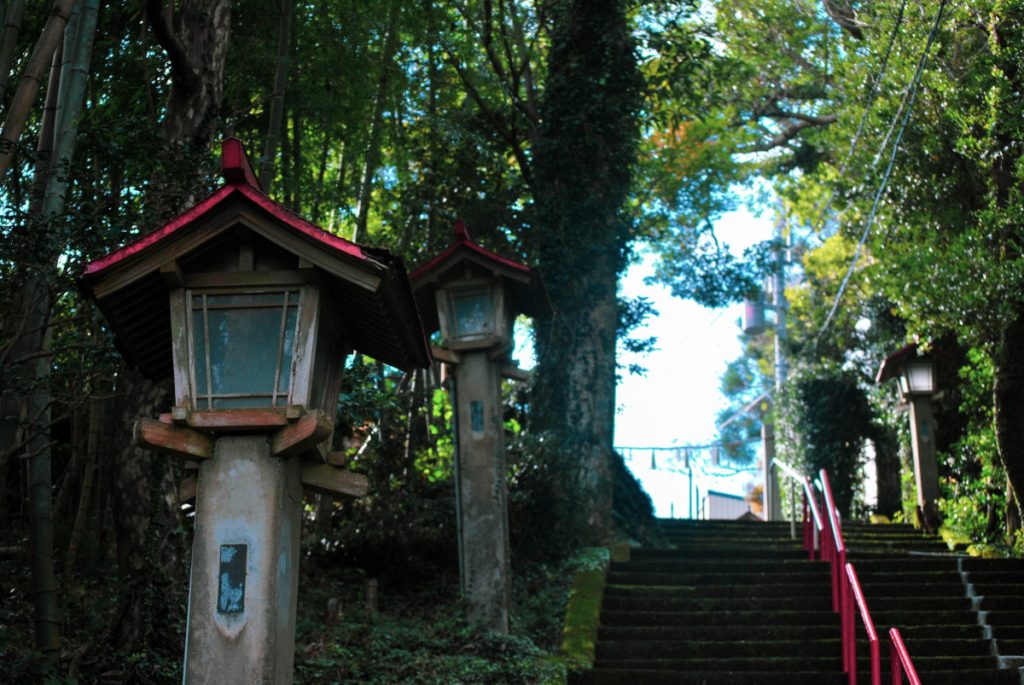
The Henro is a Buddhist pilgrimage route that connects no fewer than 88 temples. Another special feature is that it is a circular route – most pilgrimage routes start at one place and end at a sacred site. It is very popular among Japanese and a small, dedicated community of long-distance hikers, partly because it can be started, interrupted or ended at any point.
Of course, the goal of visiting all 88 temples is not suitable for a three-week trip to Japan. Nor is it necessary: Many Japanese travel the Henro in small stages that they divide up over their entire lives. Also, many no longer hike it, but take buses, cars or motorcycles. A few people also cycle the Henro.
The city of Tokushima is a good base camp from which you can easily reach the first and last temples of the Henro and discover them in several days. Tokushima itself is a year-round outdoor hub for locals and tourists. In addition to the Henro, you can go white-water rafting and surfing here. In August, the traditional Awa Odori dance festival takes place, which brings the city to overflowing.
We suggest two hikes that you can experience in one day each. You can extend the hike from temple no. 1 to no. 6 to a two-day hike with an overnight stay – either further along the Henro or back the same way.
From Ryozenji Temple (No. 1) to Anrakuji Temple (No. 6)
The first 17 kilometers of the Henro are a good introduction to the Henro and also the first stage for many pilgrims. The route is not so much through unexplored wilderness, but it is easy to reach and allows you to immerse yourself in the non-touristy life of Japan.
You will visit six temples along the way, three of which we will introduce to you in more detail. The others are also all worth a visit. If you really want to get that pilgrimage feeling, take the time to stop at each one and watch the other hikers or even take part in the rituals.
Temple No. 1: Ryozenji Temple
Ryozenji Temple is located just outside Tokushima in the (worth seeing!) suburb of Naruto and is a popular start and end point for many Henro pilgrims. The temple was probably built in the eighth century and is a gem complete with koi carp pond and pagoda.
Here, pilgrims stock up on all the equipment they need for the journey. A white vest, a hat and a pilgrim’s staff with a bell are the basic equipment that makes the pilgrims recognizable as such. This has the advantage that the inhabitants of Shikoku take notice of them and show them incredible hospitality: Invitations for tea, small gifts of food and sometimes even cash are not uncommon for pilgrims on the Henro. Even as a day hiker, you might encounter this openness, which is rather unexpected in Japan. So be sure to put on your friendliest smile.
Gokurakuji Temple
The second stop on the pilgrimage is also in Naruto, only about 15 minutes away. Gokurakuji Temple was also founded in the 8th century and is even considered a national heritage site. This temple is notable for several reasons: there is a huge tree believed to have been planted by Kobo Daishi himself, the ‘Cedar of Long Life’. There is also a small Jizo statue that pilgrims should try to lift while thinking about their wish – if the statue feels heavy, the wish is said not to come true.
Anrakuji Temple
The last stop on this hike is Anrakuji Temple, which is about 17 kilometers from Ryozenji. As Anrakuji offers the unique opportunity to stay overnight in the temple, it is the logical first stop for pilgrims. The food is simple Buddhist fare and the accommodation is modest – but there is the temple’s own beautiful onsen!
Another highlight is the opportunity to attend some of the temple’s unique Buddhist ceremonies. Funnily enough, there’s also a drinks vending machine selling canned beer and chu-hi, canned shochu cocktails, so the ambience isn’t quite as formal and austere as it might sound.
You can either spend the night here and walk back the next day or organize a return transfer by bus or cab if you prefer to do two different hikes.
From Kakurinji Temple (No. 20) to Tairyuji Temple (No. 21)
This hike is a long all-day hike with decent inclines and leads through long stretches of enchanting forests, which, together with the pace of the physical exertion and the harmony of the temples, will easily put you in a meditative state of mind. You will visit two enchanting temples, both on mountain peaks that offer fantastic views of the surrounding area. The paths are largely still in their original state, which means that you will experience no asphalt and plenty of nature on this section.
The temples are further away from Tokushima and require a bus ride that can take more than an hour in each direction. A Tokushima public transportation day pass will get you there and back easily. We recommend you start early. Start at Ikuna bus station and head for Temple 20 first. From Temple 21, a cable car takes you down to Wajiki, from where you can take the bus back.
Tairyuji Temple (No. 21)
Tairyuji Temple (No. 21) in particular is stunning. It can be reached by cable car or on foot and was considered one of the more difficult temples to reach until the cable car opened in 1992. The climb is sweaty, but well worth the effort: a picture-book temple surrounded by ancient trees, complete with Zen garden and sweeping views across Shikoku awaits you. 15 minutes away from the temple you will also find a Kukai statue, which can be reached by a little climbing and offers an even more spectacular view. You can make your way down by cable car, which takes you over green hills and valleys and brings you even closer to the beauty of the region. From the valley station, the bus will take you back to Tokushima.
Nikko National Park
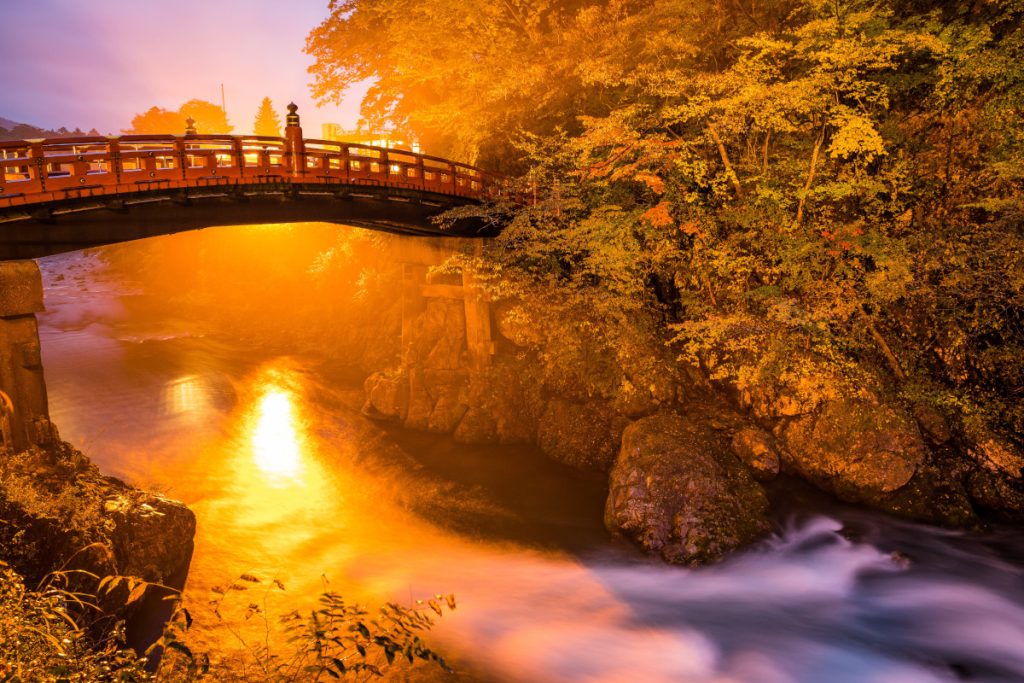
From Tokushima, you can easily get back to Tokyo by bus or train. From there, take a two-hour train ride to Nikko City and immerse yourself in Nikko National Park. Two days is short, but enough to experience the beauty of Nikko – and after the henro, perhaps enough to avoid straining your legs even more.
There are so many good photo spots in Nikko National Park that it’s really hard to keep your cell phone in your backpack at all. The Nikko Tosho-gu Shrine, with its world-famous wood carving of the three wise monkeys who hear, see and say nothing, is one of them. At Futarasan Shrine you will find the impressive scarlet bridge in the midst of the most beautiful Japanese nature, which harmonizes perfectly with the colourful autumn leaves, especially in autumn.
The beautiful Lake Chuzenji is ideal for a day hike that immerses you in the park’s nature. The Ryuzu and Kegon waterfalls (60 and 100 meters high) are absolute highlights in Nikko National Park, not least because there is a teahouse at the Kegon waterfall where you can enjoy the panorama with a cup of sencha.
If you are in the mood for more hiking, the Procession of a Thousand Warriors is a good opportunity. It is an old processional path that leads through an old crescent fir forest and over several hundred stone steps. Also worth a visit is the Ozegahara bog, the largest mountain bog on Honshu, which offers a stark contrast to the rest of the national park with its mirror-like, crystal-clear ponds and rare plant species.




